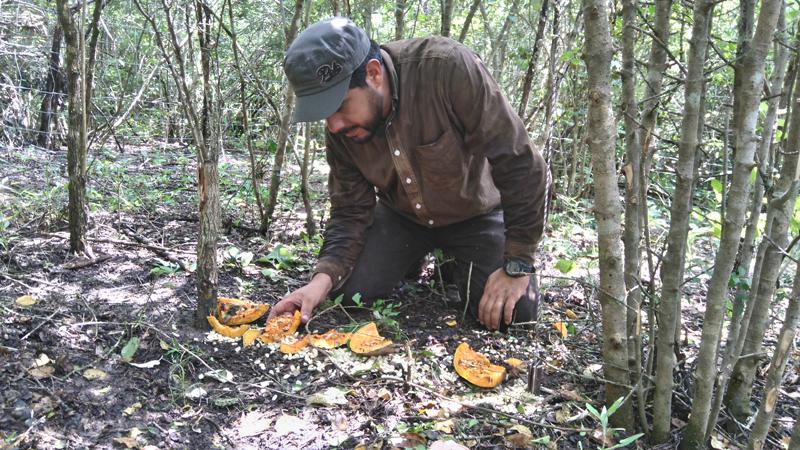Anuar D. Hernández
We want to study jaguar-peccary spatial-temporal interactions, habitat use, health, nutritional status, and density of peccaries in an agro-landscape of Abra-Tanchipa Biosphere Reserve Mexico, in order to continue conservation efforts.

Baiting.
The Sierra Madre Oriental is a hotspot of biodiversity, and an important region for conservation of jaguars in Mexico. A reproductive population of jaguars which feed primarily on collared peccary inhabits Abra-Tanchipa Biosphere Reserve and surrounding agro-landscape. Peccary is also an important resource for rural communities. We will obtain information about how jaguars and peccaries move in the protected area and adjacent agro-landscape; hence, the importance of diverse crops and ranches for the jaguar. In addition, we are going to obtain information about home-range size, habitat selection and food habits of peccaries.
With these data, we are going to be able to estimate peccary's density, contributing to calculate the carrying capacity for jaguars. The captures will allow getting diverse biological samples necessary to fill gaps in knowledge about their natural history. We will be able to describe for the first time; serologic values, presence of diseases, parasites and nutritional status of the principal prey species for jaguars in northeast Mexico. Also peccary information will serve as a guide to transform current not regulated subsistence hunting, in to a sustainable use by the rural settlers. We considered this as an excellent opportunity to fill gaps in knowledge about space-temporal interactions of these species, in order to successfully continue the conservation efforts in RBSAT.